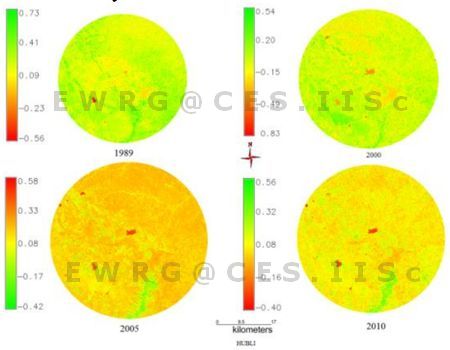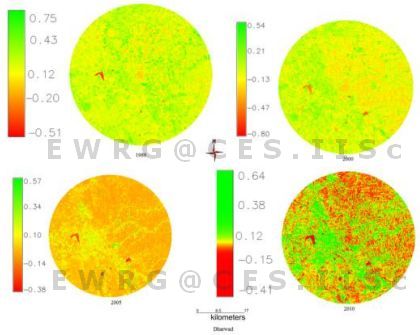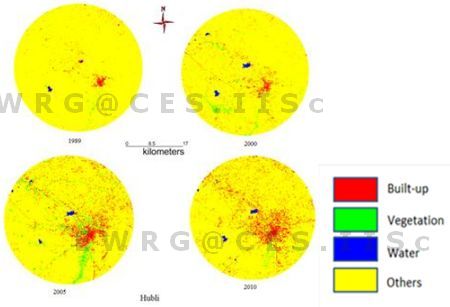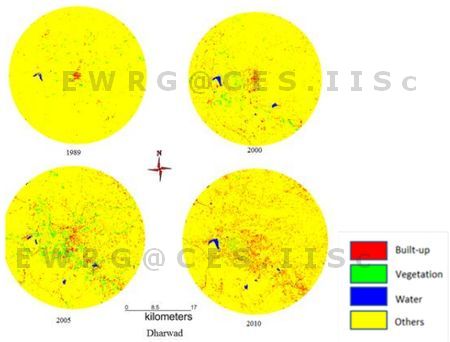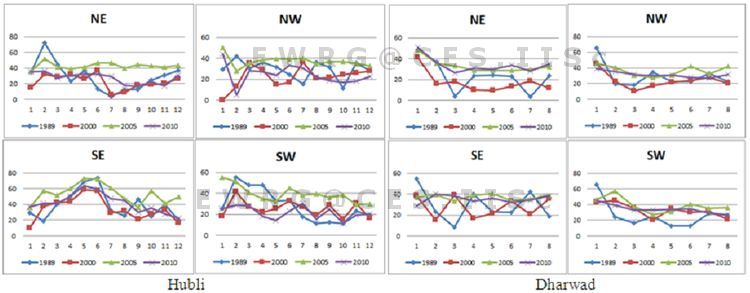- Spatial patterns of urbanisation: In order to understand the spatial pattern of urbanization, ten landscape level metrics were computed zone wise for each circle. These metrics are discussed below:
Number of Urban Patch (Np) is a landscape metric indicates the level of fragmentation and ranges from 0 (fragment) to 100 (clumpiness).
Figure 6a illustrates that the Hubli city is forming patched that are clumped at the center but is relatively disaggregated at the outskirts, but compared to the year 2005, 2010 results is indicative of clumped urban patch in the city and is directive of forming a single urban patch. Clumped patches are more prominent in NE and SW directions and patches is agglomerating to a single urban patch. The case with Dharwad is different as in case it has started to disaggregate in 2010, until 2010 there were less no of urban patches in the city, which have increased in 2010, which is indicative of sprawled growth in the city.
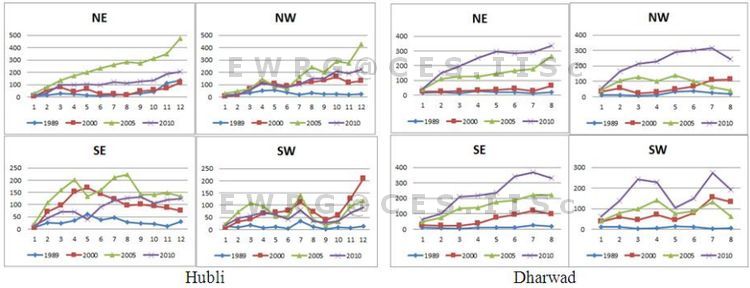
Figure 6a: Number of urban patches (Directionwise, circlewise)
The patch density (Figure 6b) is calculated on a raster map, using a 4 neighbor algorithm. Patch density increases with a greater number of patches within a reference area
Patch density in Hubli and Dharwad was higher in 2005 as the number of patches is higher in all directions and gradients due to increase in the urban built area, which remarkably increased post 1989 (SW, NE) and subsequently reduced in 2010, indicating the sprawl in the region in in early 90’s and started to clump during 2010. The patch density is quite high in the outskirts also in both the cities.
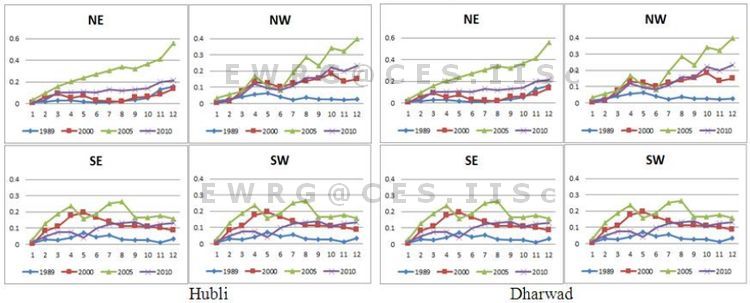
Figure 6b: Patch Density (Directionwise, circlewise)
Landscape Shape Index (LSI): LSI equals to 1 when the landscape consists of a single square or maximally compact (i.e., almost square) patch of the corresponding type and LSI increases without limit as the patch type becomes more disaggregated. Figure 6c indicate that there were low LSI values in 1989 as there was minimal urban areas in both Hubli and Dharwad which were mainly aggregated at the center. Since late 1990’s both the city has been experiencing dispersed growth in all direction and circles and Hubli reached the peak of dispersed growth during 2005, towards 2010 it shows a aggregating trend in Hubli, whereas In Dharwad it is showing an dispersed growth.
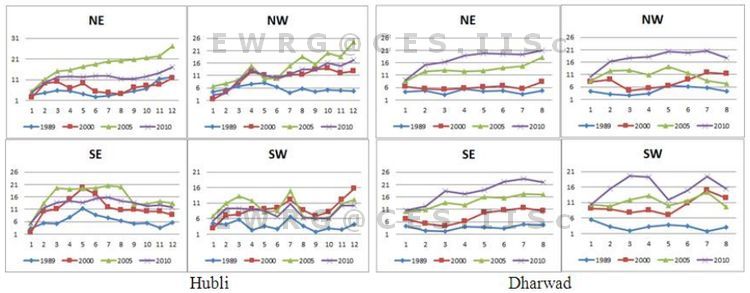
Figure 6c: Landscape Shape Index (Directionwise, circlewise)
Normalized Landscape Shape Index (NLSI): NLSI is 0 when the landscape consists of Single Square or maximally compact almost square, it increases as patch types becomes increasingly disaggregated and is 1 when the patch type is maximally disaggregated. Results of NLSI (Figure 6d) indicates that the landscape had a highly fragmented urban class, which became further fragmented during 2000 and started clumping to form a single square in late 2010 especially in NE and SW direction in all circle and few inner circles in SE and SW directions, conforming with the other landscape metrics.
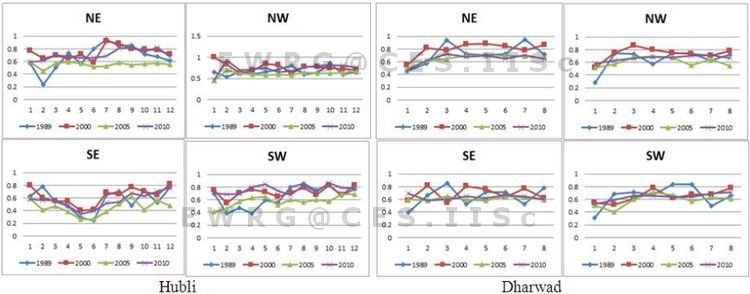
Figure 6d: Normalized Landscape Shape Index (Direction wise, circle wise)
Clumpiness index equals 0 when the patches are distributed randomly, and approaches 1 when the patch type is maximally aggregated. Aggregation index equals 0 when the patches are maximally disaggregated and equals 100 when the patches are maximally aggregated into a single compact patch. Clumpiness index, Aggregation index highlights that the center of the both the cities is more compact in 2009 with more clumpiness and aggregation in SW and NE directions. In 1989 the results indicate that there were a small number of urban patches existing in all direction and in every circle and due to which disaggregation is more. Post 2000 and in 2010 we can observe large urban patches very close almost forming a single patch especially at the center and in SW direction in different gradients (Figure 6e and Figure 6f). Hubli in 2010 has become much aggregated while Dharwad is yet aggregating to form a single or maximally compact area.
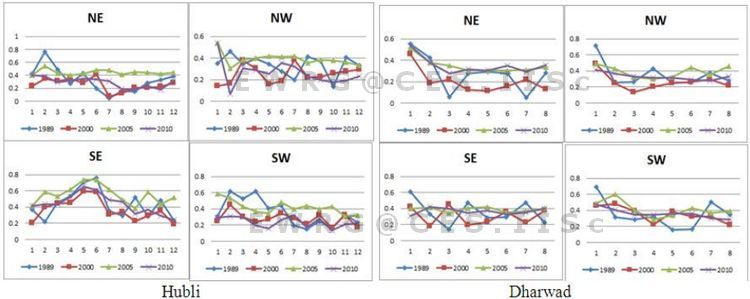
Figure 6e: Clumpiness Index (Direction wise, circle wise)
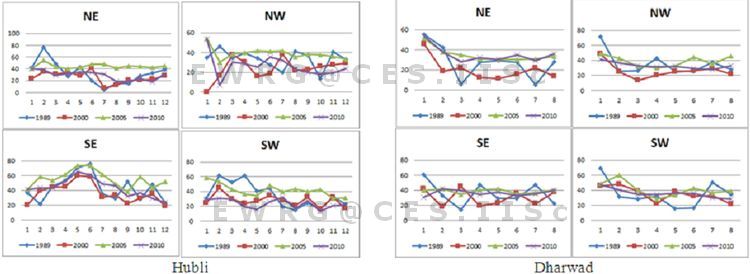
Figure 6f: Aggregation Index (Direction wise, circle wise)
Percentage of Like Adjacencies (Pladj) is the percentage of cell adjacencies involving the corresponding patch type those are like adjacent. Cell adjacencies are tallied using the double-count method in which pixel order is preserved, at least for all internal adjacencies. This metrics also explains the adjacencies of urban patches that the city center is getting more and more clumped with similar class (Urban) and outskirts are relatively sharing different internal adjacencies. Hubli city shows more adjacent clumped growth, whereas Dharwad shows more disaggregated growth (Figure 6g).


